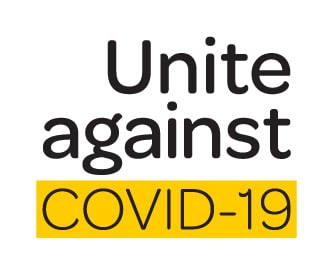Right now, the quest to find and employ the best people in their field is very competitive. For you to secure the super star your business needs, business owners and managers need to be doing absolutely everything that they can to ensure that people out there want to come and work for your Company.
This means doing a lot of things well – having a great culture, an attractive employment brand, offering personal and professional training and development, and to be very, very, good at marketing your organization throughout your total recruitment process.
“Hiring the right people takes time, the right questions, and a healthy dose of curiosity.”
(Richard Branson.)
Many organisations develop what can be described as a good set of recruitment systems. However, over time and with staffing changes, these systems become watered down, corners are cut, ad hoc additions are made and the whole recruitment process becomes incrementally weakened. This can result in you only attracting average candidates, and then also missing selecting the best ones from that batch.
There is no need to spell out what the outcome will be and, repeated a number of times, what this does to your chances of lifting your organization into the top tier.
To employ the best a top recruitment process needs to be in place so that you are 100% sure you are getting talent.

Focusing on the essentials is a great starting point to review your process:
- Decide on a Company recruitment philosophy and incorporate it into your recruitment policy
Do all your employing managers know that you only employ the best every time there is a vacancy? Does everyone involved in recruitment understand the need to only aspire to employ the absolute best and have a clear picture of what “the best” looks like? Yes, sometimes compromises do have to be made. However, the point here is to ensure that those involved fully understand where you expect them to start from. This is about their mind set and setting high expectations at the outset
- Develop a Recruitment Policy
Having a formally issued recruitment policy signals the importance of this critical activity. The policy needs to be regularly reviewed and continuously communicated within the organisation. It should include points related to:
- Company recruitment philosophy
- Equal Employment Opportunity statement
- Channels of attraction/sourcing
- Merits of tests /personality profiling
- Recruitment process
- Job offers and employment agreements
- Induction & on-boarding
- Review or Write a Position Description
Often, we ask the questions of whether a Position Description exists for a role and most usually the answer is “Yes”. We also frequently establish that the description is out of date, badly written and is not outcome focused. Make 100% certain that the Position Description that is going to be used to drive the recruitment is current and solid, and properly describes the role for which you will be recruiting.
- Think through the Person Profile
In addition to the skills, knowledge and competencies identified to successfully fill a role, it is important to reflect a little deeper and think through the amount of inter-action the role will have with others. For any role that has a fair amount of contact with others, be it through meetings or individual inter-actions, it is imperative to give consideration to what sort of personality characteristics the ideal person is likely to possess. Also, to consider the dynamics of the current group and think about what sort of personality would complement the team (and also what type of personality would create problems or not add value in the team). Person profiles can end up very long with generic descriptions, which are impossible to recruit against. Make sure yours are clear, succinct and really contain the key skills and personal characteristics of someone who will be a success.
- Carefully consider and choose the channels of attraction/sourcing for each role
Make sure that the sourcing channels used to find a new employee are appropriate for the role. Each role is different and a standard approach trotted out for every role may not be appropriate and can be a big waste of money. Consider networking, social media, internal incentives, referrals, internal advertising, SEEK and Trade Me advertising, industry publications and external consultants.
- Deliberately use the Position Description and Person Profile to evaluate each application
Make sure that these two documents remain top of mind when assessing applicant suitability for the role. Its easy to get side tracked as a candidate may have some other great skills, but they aren’t exactly what you need.
- Screen applicants via both a CV review and telephone screening
Rather than inviting Possibles into an interview straight away, screening Possibles via a brief telephone call can save a lot of time and effort. Using a few standard questions, the telephone screen quickly allows you to get a feel for a candidate’s suitability as well seeing if remuneration expectations align.
- Prepare for interviews by drafting a set of suitable questions
Put the time into preparing a set of questions that will be both standard for all those interviewed as well as relevant to the role. Frequently questions asked are done on the hop and are not well thought out or particularly probing. The interview is your chance to really find out a candidate’s suitability, so make the best use of the time by preparing well.
9 . A second interview is essential
It is imperative to conduct a second interview for a favored candidate as the second meeting allows the interviewer to see if first impressions still hold and also to view the candidate inter-acting in a more relaxed way. Depending on the role, a second interview also allows for more in-depth questions that are directly job related to be asked and for practical examples of transferable achievement in previous similar roles to be assessed. The all-important fit with the team and organization can also be explored in more depth.
- Consider a test or assessment of a favored candidate
For some roles, an on-site test can be very revealing and qualifies/disqualifies candidates simply. Personality assessments can be useful for more senior roles. Both tests and assessments provide more information for you to make a good recruitment decision.
- Reference checking provides external validation (or otherwise) of your impressions
Using a standard set of questions, with some role specific customization, allows for you to hear what others think of the suitability of your favored candidate for the role. Listen for subtle warning signs in their language as most referees will not want to directly provide negative feedback on ex-employees. This ability to read between the lines is an important part of the listening process in reference checking.
- Carefully consider your offer
Before making an offer, make sure that you are confident that the remuneration and conditions offered will be close to what the candidate expects. Whilst some negotiation is normal, ideally you would want your offer to be close to what the candidate would expect. This allows the new employee to join with a positive frame of mind, feeling valued before they start. If they have had to fight to get what they want (which you may have been happy to offer in the first place), it can create some dissonance before the employment relationship has even begun. Make sure that your Recruitment Policy spells out what the Company’s stance on pay rates is and ensure that offers reflect the intention of the policy.
- Issue the Employment Agreement quickly
Once you have made the decision to offer a job to an applicant, and have had the preliminary discussions/negotiations and have settled on the remuneration and conditions, move quickly to confirm the appointment by email, followed almost immediately by issuing the actual Employment Agreement. It often happens that tardy administration in this regard results in the favored candidate slipping away and accepting another offer. Then it can be all the way back to the drawing board. And often this second go at filling a role is hurried and conducted with less enthusiasm. Make certain that the Employment Agreement is signed and sealed prior to the start date.
- Induction and On-boarding really matter
Once the Employment Agreement has been signed, induction has pretty much started because in the new employee’s mind they project themselves forward and are already feeling associated with their new organisation. This means that any inter-action you might have with them from then on needs to be positive and reflective of your Company values. From there to the first few day’s introductions and orientation, and through the longer process of on-boarding, every step of the way needs to be professionally handled. This initial period in an organisation is critical and needs to be well organized.

If you need help with any aspect of your recruitment, we can help. Working with you, Positive People have over 25 years of recruitment success.
Call us on 09 445 1077 or email info@positivepeople.co.nz
















